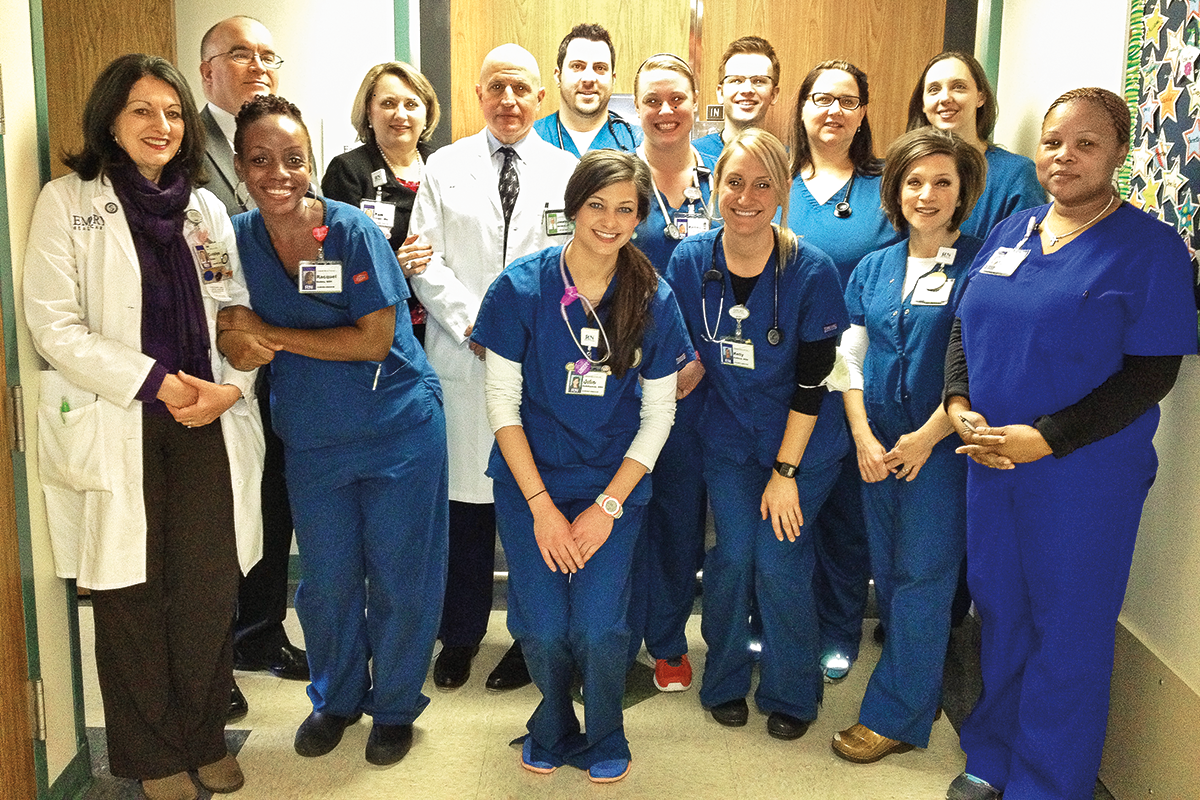Reducing Harm from Alarms
Here's how one ICU dealt with the cacophony of monitor alarms.
A stay in the Intensive Care Unit (ICU) is no picnic when you’re recovering from major surgery, severe trauma, or serious illness. Patients endure their share of discomfort—IVs, needle sticks, staples or sutures, bandages, chest tubes, cannulas, catheters, bright lights, and noise.
Among the sounds that surround patients: the incessant beeping of the ICU monitor that tracks their vital signs.
When the monitor emits an alarm, it’s meant to alert their nurse when vital signs such as blood pressure, heart rate, blood oxygen level, and respiration fall below safe levels.
Today’s sophisticated ICU monitors can produce hundreds of different alarm sounds. Even a slight change in a vital sign can cause a monitor to alert. But are more alarms necessarily better?
Definitely not, say Emory University Hospital nurses familiar with medical alarm fatigue.
Alarm fatigue affects hospital staffs nationwide and occurs when workers become desensitized to the excessive number of alarms emitted by medical devices. While most alarms are not urgent, missing an alarm that is urgent potentially could harm a patient. And the stress of all those alarms can create burnout among health care workers.
The Joint Commission, the agency that accredits U.S. hospitals, made reducing alarm fatigue a national safety goal in 2014. But years before that, two nurses in the medical ICU at Emory Hospital already had recognized it as a priority: With 14 beds on two floors, the unit averaged 1,400 alarms per bed per day. How could the unit reduce this overwhelming number?

Ray Snider, medical ICU director, and Pam Cosper, the hospital’s critical care services director, came up with a plan. They collected data in real time from the monitor vendor. Once a month, a unit nurse counted the number of alarms and how nurses responded to them. The majority of alarms, they found, were false. The average number per bed per day in Emory Hospital’s medical ICU dropped from 1,400 to 300, primarily from the elimination of false alarms.
Targeting false alarms
Three common alarms caused the most false alerts. These occurred when an EKG electrode came loose, a pulse oximetry sensor (which measures pulse rate and blood oxygen levels) slipped off a patient’s finger, or a patient’s pulse ox changed slightly yet was still within a safe range.
Unit nurses reduced alarm sounds based on two goals set by Snider and Cosper. First, nurses programmed ICU monitors to make only “actionable alarms”—those that require a nurse to check on their patient at the bedside. Second, instead of a one-size-fits-all approach, nurses began using “individualized monitoring” for patients.

Ray Snider (back row, left), Pam Cosper (back row, second from left) developed ways to reduce alarms and make the ICU a quieter, more peaceful environment for staff and patients.
Choose then customize
“As we’ve upgraded our ICU monitors in the past two years, we’ve put a lot of effort into choosing the right alarms for our patients,” says Snider. “We customize them for every new patient. We start out with the same default settings and work from there.”
Doctors and nurses also determined which alarms were not needed and turned them off. The alarm for premature ventricular contractions (PVCs) is a prime example. Healthy people have a PVC—an irregular heartbeat—from time to time. Sick people have more of them. Unless they have several in a row, PVCs don’t pose a health problem.
“Every time an ICU patient had one PVC, we got an alarm,” says Snider. “We turned that functionality off. That one intervention reduced the number of alarms significantly.”
To further prevent false alarms, nurses change EKG electrodes and pulse ox sensors daily so that they function properly. They keep track of their patients with the help of large TV screens placed throughout a newer 17-bed medical ICU, located in the Emory University Hospital Tower. The screens show each patient’s vital signs and emit an audible alert, supplementing what clinicians see and hear on computer monitors at the nurse’s station.
As ICU monitoring technology continues to evolve, patient care will become even more complex. But nothing can surpass the skills of a good nurse.
“The ICU monitors are just one piece of what nurses do,” Cosper notes. “Patients are surrounded by all types of equipment that alarm, from ventilators to IV monitors. One thing that nurses can’t lose sight of is having eyes on what’s happening with their patients at the bedside.”
Email the Editor


